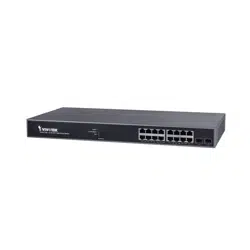Loading ...
Loading ...
Loading ...

123
interval specified by the Reauthentication Period. Reauthentication for 802.1X-enabled ports
can be used to detect if a new device is plugged into a switch port or if a supplicant is no
longer attached.
For MAC-based ports, reauthentication is only useful if the RADIUS server configuration has
changed. It does not involve communication between the switch and the client, and
therefore doesn't imply that a client is still present on a port (see Aging Period below).
Reauthentication Period :
Determines the period, in seconds, after which a connected client must be reauthenticated.
This is only active if the Reauthentication Enabled checkbox is checked. Valid values are in
the range 1 to 3600 seconds.
EAPOL Timeout :
Determines the time for retransmission of Request Identity EAPOL frames.
Valid values are in the range 1 to 255 seconds. This has no effect for MAC-based ports.
Port Configuration
Port :
The port number for which the configuration below applies.
Admin State :
If 802.1X is globally enabled, this selection controls the port's authentication mode. The
following modes are available:
Force Authorized:
In this mode, the switch will send one EAPOL Success frame when the port link comes up,
and any client on the port will be allowed network access without authentication.
Force Unauthorized:
In this mode, the switch will send one EAPOL Failure frame when the port link comes up,
and any client on the port will be disallowed network access.
Port-based 802.1X:
In the 802.1X-world, the user is called the supplicant, the switch is the authenticator, and
the RADIUS server is the authentication server. The authenticator acts as the
man-in-the-middle, forwarding requests and responses between the supplicant and the
authentication server. Frames sent between the supplicant and the switch are special
802.1X frames, known as EAPOL (EAP Over LANs) frames. EAPOL frames encapsulate EAP
PDUs (RFC3748). Frames sent between the switch and the RADIUS server are RADIUS
packets. RADIUS packets also encapsulate EAP PDUs together with other attributes like
the switch's IP address, name, and the supplicant's port number on the switch. EAP is very
flexible, in that it allows for different authentication methods, like MD5-Challenge, PEAP,
and TLS. The important thing is that the authenticator (the switch) doesn't need to know
which authentication method the supplicant and the authentication server are using, or
how many information exchange frames are needed for a particular method. The switch
simply encapsulates the EAP part of the frame into the relevant type (EAPOL or RADIUS)
and forwards it.
When authentication is complete, the RADIUS server sends a special packet containing a
success or failure indication. Besides forwarding this decision to the supplicant, the switch
uses it to open up or block traffic on the switch port connected to the supplicant.
NOTE: Suppose two backend servers are enabled and that the server
timeout is configured to X seconds (using the AAA configuration page),
and suppose that the first server in the list is currently down (but not
Loading ...
Loading ...
Loading ...
